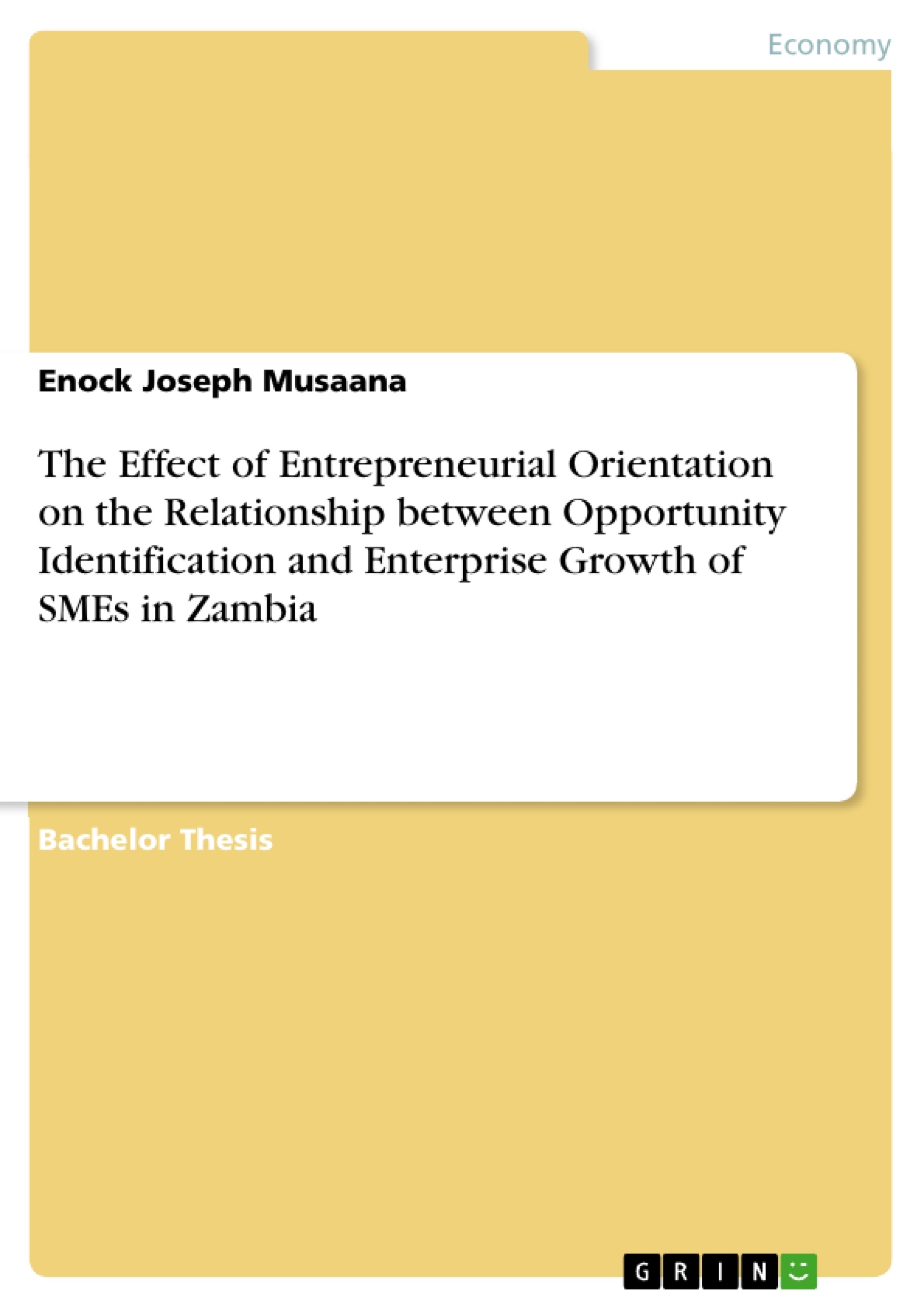The myth that entrepreneurs are born, no more holds good, rather it is well acknowledged now that entrepreneurs can be created and nurtured through addressing issues such as opportunity identification and entrepreneurial orientation which has to a high degree potential to increase enterprise growth of SMEs. This research evaluated the effect on entrepreneurial orientation on the relationship of opportunity identification and enterprise growth. Data evaluated was collected through administering of questionnaires to 86 SMEs registered with the National Council for Construction (NCC). The outcome of this research has reviewed that there is a significant effect of Entrepreneurial Orientation (EO) on Opportunity Identification (OI) and Enterprise Growth (EG) relationship of SMEs in Zambia. This has been supported by Wiklund (2005) who retaliated the fact that empirically, research has found that there is an influence of EO on enterprise growth.
Inhaltsverzeichnis (Table of Contents)
- ABSTRACT
- LIST OF FIGURES
Zielsetzung und Themenschwerpunkte (Objectives and Key Themes)
This research aims to assess the impact of entrepreneurial orientation on the relationship between opportunity identification and enterprise growth within the context of Small and Medium Enterprises (SMEs) in Zambia.
- The influence of entrepreneurial orientation on SME growth.
- The role of opportunity identification in SME growth.
- The relationship between entrepreneurial orientation and opportunity identification.
- The impact of entrepreneurial orientation on the relationship between opportunity identification and enterprise growth.
Zusammenfassung der Kapitel (Chapter Summaries)
This research paper will explore the impact of entrepreneurial orientation on the relationship between opportunity identification and enterprise growth of SMEs in Zambia. The research will focus on the following key aspects: entrepreneurial orientation, opportunity identification, enterprise growth, and the relationship between these variables.
Schlüsselwörter (Keywords)
The research paper focuses on key terms and concepts such as Entrepreneurial Orientation (EO), Opportunity Identification (OI), Enterprise Growth (EG), and Small and Medium Enterprises (SMEs).
- Quote paper
- Enock Joseph Musaana (Author), 2014, The Effect of Entrepreneurial Orientation on the Relationship between Opportunity Identification and Enterprise Growth of SMEs in Zambia, Munich, GRIN Verlag, https://www.grin.com/document/304316



